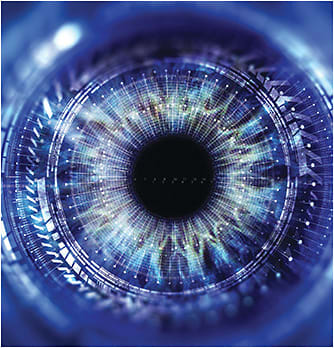It seems as if in every direction turned these days, technology is taking over. However, technology comes at a cost. For eye-care providers, costs usually come in the form of equipment and equipment maintenance, not to mention IT resources. Another consideration is that while technology is great, we must not forget how to operate without it and certainly should be able to troubleshoot if the technology is not smarter than the practitioner!
With specialty contact lenses, it is helpful to have technology for a variety of reasons. First and foremost, corneal topography is helpful in that it can determine a starting point for a GP lens for an irregular cornea or orthokeratology. For scleral lens fits, scleral profilometry is very useful to help understand the scleral shape, which can aid with peripheral alignment. For scleral lens fits, corneal topography is helpful but not absolutely necessary, so do not let the process intimidate you if you still have not joined the scleral-fitting bandwagon.
As with any specialty lens, get familiar with one brand when starting. Have a go-to lens that is used for most patients. A technician can apply the lens and fill the bowl with sodium fluorescein prior to application. The technician can also obtain initial vision and over-refraction data. From that point, the process is consistent.

Start with white light and a slit beam on the slit lamp biomicroscope. Focus on central clearance and look with both white light and a cobalt filter. Ideally, the initial clearance should be about 300 to 350 microns—about half the width of the cornea or more. This allows for lens settling over time.
Next, ensure that the lens is clearing the limbus, as this is vital for corneal health. After that, move to the edges. In general, practitioners should look at both horizontal areas (temporal and nasal), then vertical areas (superior and inferior), as they tend to have similar alignment patterns.
For a lens that is too loose, you will see a gap between the lens and the conjunctiva. Another way to check: look for a shadow that is projected onto the conjunctiva. If the lens is loose, the same issue will usually persist 180º away—not always, but commonly. In this case, order a steeper haptic profile along this meridian.
If a lens is too tight, blood flow will be constricted, with visible indentation on the conjunctiva. In this case, order a flatter haptic for that meridian. A foolproof way to observe if a lens is too tight is to apply sodium fluorescein first, then remove the lens. Use a Wratten filter and the cobalt filter on the slit lamp to see arcuate staining in the areas that were too tight. Again, this means that you will need to flatten the lens in that area.
While you can consider ordering lenses that are tailored to each quadrant (superior, inferior, nasal, and temporal), be mindful to instruct the patient to orient the lens correctly prior to application (usually guided by a black dot). Note that the marking may wear away and this may be difficult for the patient over time, so stick with a simpler fit to help with long-term problems.
The hard part is how much to flatten or tighten. This will likely depend on the fitting set, and it is recommended that you follow the fitting guide. Lab consultants are always a wonderful resource and can help guide you through the ordering process. Once you have an opportunity to practice this a few times, you are well on your way to the “perfect” landing! CLS




